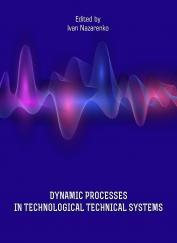Research of processes of producing materials by technical power loading systems
Keywords:
deformations, Technical systems, energy, technological media, synergetics, grinding, vibration amplitude, sorting, vibration frequency, mixing, laws of motion, compaction, cavitation, models, continuous and discrete parameters, force loads, stressesAbstract
An increase in the effective working process of the crusher is achieved when it operates in the vicinity of resonance, i.e. at a high value of the coefficient of resonant amplification of oscillations. The optimal values of the amplitude of the oscillations of the masses have the greatest values, provided that the coefficient of regulation of elasticity in frequency n is in the range of 0.6 ≤ n ≤ 1. Within the frequency range of 14.5 Hz<f<26 Hz, material is effectively crushed. The numerical values of the coefficient are established, which determine the rational ratios of vibration masses. The studies carried out and their results indicate that the main stresses causing the destruction of the material are shear stress. Analytical equations are obtained that reflect the picture of energy consumption for the destruction of the material. Such studies are planned as a continuation of the topic under consideration through experimental studies and consideration of several members of the series and optimization of the parameters of crushing machines. The proposed approach to studying the energy characteristics of material destruction in the crusher chamber with a guaranteed zone of stability of parameters in the resonance zone can be used for other processes. Such processes include the destruction of materials during dynamic cutting of soils, processing of materials in mills and sorting of materials, which are widely used in Ukraine abroad. An algorithm and method for calculating the main parameters of a vibration crusher have been developed.

DYNAMIC PROCESSES IN TECHNOLOGICAL TECHNICAL SYSTEMS
Downloads
Pages
Published
Categories
License

This work is licensed under a Creative Commons Attribution-NonCommercial-NoDerivatives 4.0 International License.

